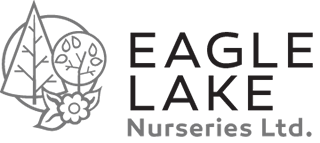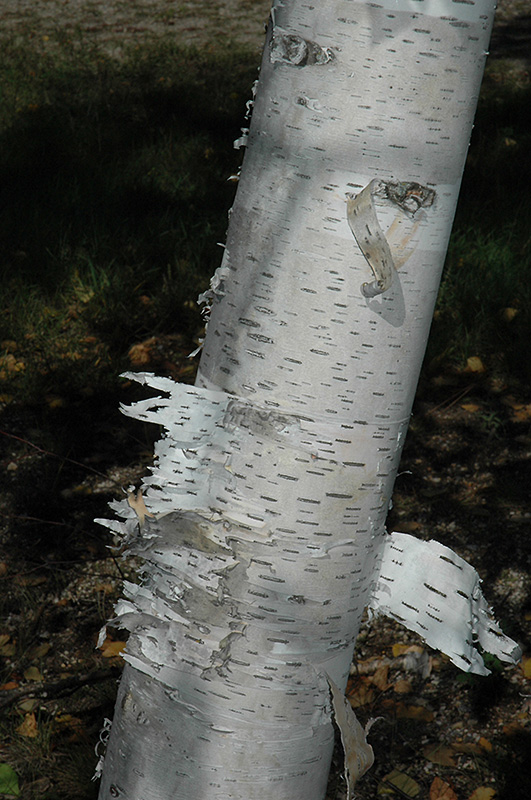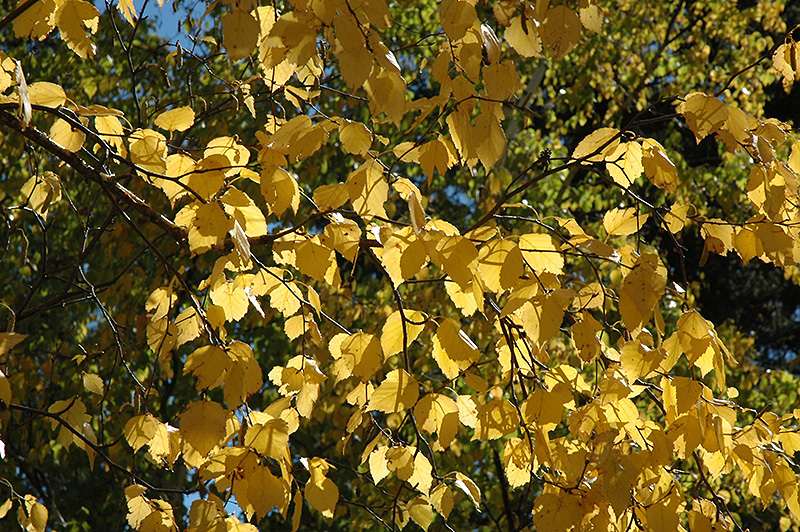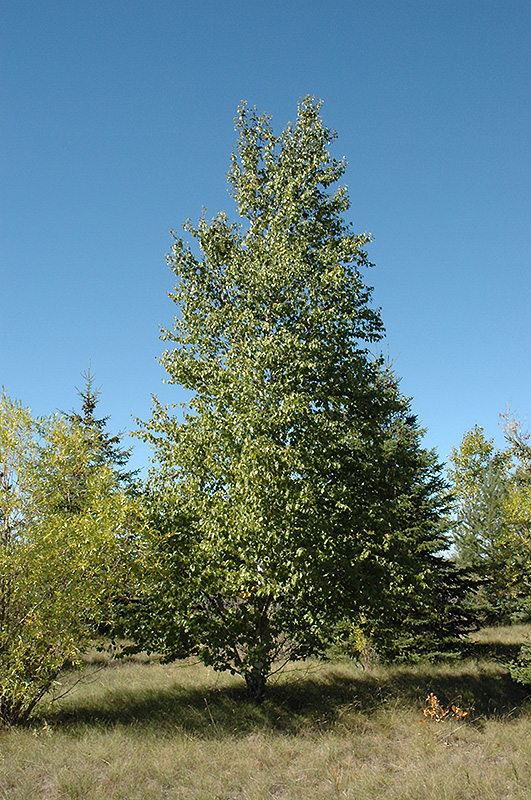Height: 39 feet
Spread: 20 feet
Sunlight:
![]()
![]()
Hardiness Zone: 2a
Description:
The king of the northern birches, with snow-white peeling bark and gold fall color; needs adequate moisture and well-drained soils; a great accent tree, and one of the best for winter value, keep it happy to avoid problems with birch borer
Ornamental Features
Paper Birch has dark green deciduous foliage on a tree with an oval habit of growth. The pointy leaves turn an outstanding gold in the fall. The peeling white bark is extremely showy and adds significant winter interest.
Landscape Attributes
Paper Birch is a deciduous tree with a shapely oval form. Its average texture blends into the landscape, but can be balanced by one or two finer or coarser trees or shrubs for an effective composition.
This is a relatively low maintenance tree, and should only be pruned in summer after the leaves have fully developed, as it may 'bleed' sap if pruned in late winter or early spring. Deer don't particularly care for this plant and will usually leave it alone in favor of tastier treats. It has no significant negative characteristics.
Paper Birch is recommended for the following landscape applications;
- Accent
- Shade
Planting & Growing
Paper Birch will grow to be about 39 feet tall at maturity, with a spread of 20 feet. It has a low canopy with a typical clearance of 3 feet from the ground, and should not be planted underneath power lines. It grows at a medium rate, and under ideal conditions can be expected to live for 70 years or more.
This tree does best in full sun to partial shade. It requires an evenly moist well-drained soil for optimal growth. It is not particular as to soil type or pH. It is somewhat tolerant of urban pollution. Consider applying a thick mulch around the root zone in winter to protect it in exposed locations or colder microclimates. This species is native to parts of North America.
Eagle Lake Tips
Also available in multi-stemmed form grown in 3 or more clumps to add more character to your garden.





